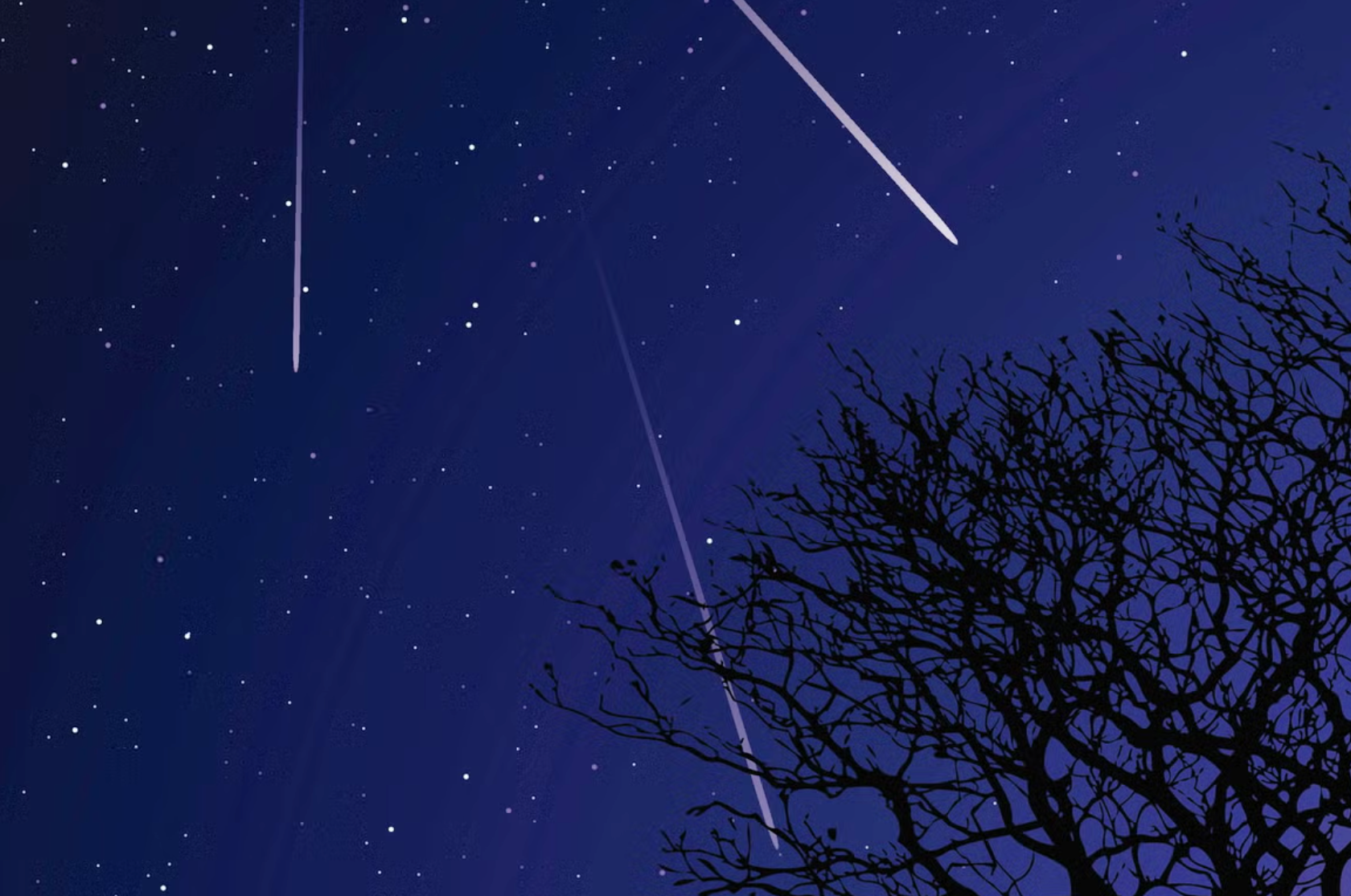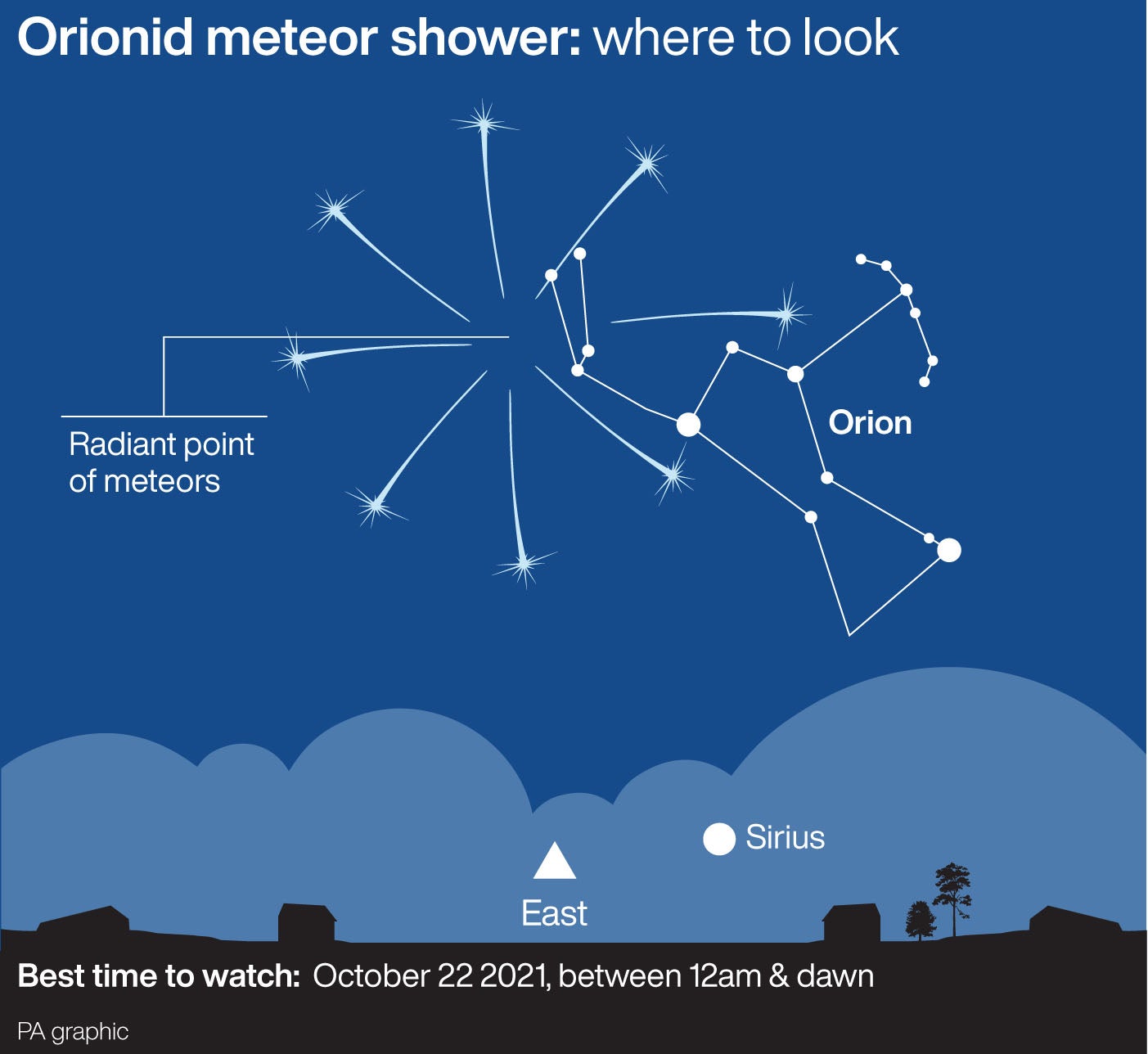Orionids meteor shower to peak tonight in ‘shooting star’ spectacle
Shooting stars to appear in night sky as debris from Halley’s comet passes through Earth’s atmosphere

Your support helps us to tell the story
From reproductive rights to climate change to Big Tech, The Independent is on the ground when the story is developing. Whether it's investigating the financials of Elon Musk's pro-Trump PAC or producing our latest documentary, 'The A Word', which shines a light on the American women fighting for reproductive rights, we know how important it is to parse out the facts from the messaging.
At such a critical moment in US history, we need reporters on the ground. Your donation allows us to keep sending journalists to speak to both sides of the story.
The Independent is trusted by Americans across the entire political spectrum. And unlike many other quality news outlets, we choose not to lock Americans out of our reporting and analysis with paywalls. We believe quality journalism should be available to everyone, paid for by those who can afford it.
Your support makes all the difference.The annual Orionids meteor shower is set to peak on Monday night, bringing up to 20 shooting stars each hour to the night sky.
The celestial spectacle, which takes place as debris from Halley’s Comet burns up in the Earth’s atmosphere, will be best observed in the hours just before dawn. The meteors will emanate from just above the Orion constellation, shooting out in all directions.
Nasa describes the Orionids as “one of the most beautiful meteor showers of the year”, producing meteors known for their brightness and speed.
“The Orionids are framed by some of the brightest stars in the night sky, which lend a spectacular backdrop for these showy meteors,” a Nasa blog post states.
“Aside from potentially producing spectacular fireballs, the Orionids reflect quite a legacy. Their parent comet is the most famous one of them all – Halley’s Comet. Each time that Halley returns to the inner solar system its nucleus sheds ice and rocky dust into space. These dust grains eventually become the Orionids in October.”

Astronomers recommend any hopeful viewers to find an area away from ambient light, and allow up to 30 minutes to allow vision to adjust to the dark.
Various free and premium smartphone apps are available to help locate the Orionids,including SkyView Lite, SkySafari and Sky Map, which all use a smartphone’s built-in gyroscope to point to the Orion constellation.
The Orionids can produce up to 70 meteors per hour during a good year, though this year’s display will likely see slightly less as the waning gibbous moon will prevent some of the dimmer space rocks from appearing to the naked eye.
Cloud cover over large parts of the UK will also obscure the Orionids from view for many, though central and north eastern parts of the country will have clear skies, according to the latest Met Office forecast.
After the peak on Monday night into Tuesday morning, the Orionids meteor shower will continue to produce shooting stars until 7 November.
Join our commenting forum
Join thought-provoking conversations, follow other Independent readers and see their replies
Comments